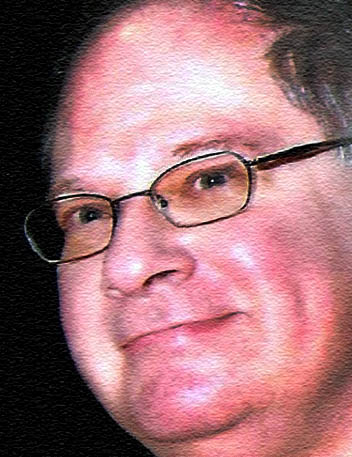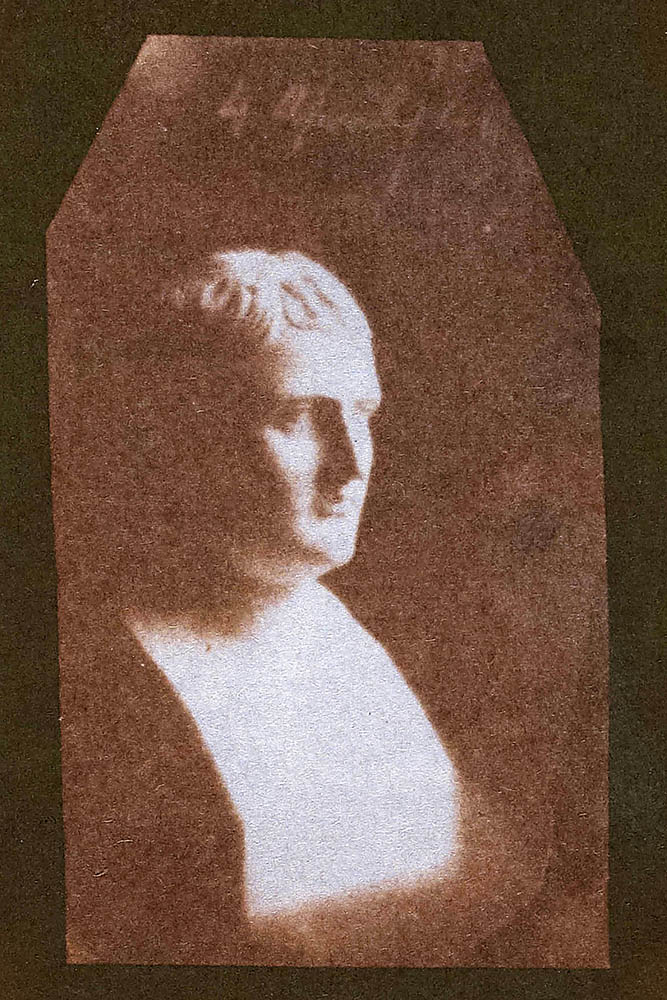Guest post by Steven F Joseph
This week’s blog will not be primarily about Talbot. However, it goes to the core of what we are trying to accomplish. Not at all by design, I fear that over the span of a few years of Talbot studies that I have assembled a stable of wonderful crazies – eccentrics by some people’s definition – and I count it my privilege to consider many of them to be close friends.
There is a lot of competition as to who is zanier than the next, but I know of no one who can light up a room faster than Steven Joseph. And once he has everyone rolling in stitches it begins to dawn on them that they are all starting to learn new things by the minute. Suddenly answers emerge to questions nobody has even thought to ask.
Steven works closely with another Brit, Anthony Hamber, broadly on their shared interests of bibliography and especially on photomechanically reproduced books. Steven has authored numerous articles and books on 19th c. photography in Belgium. His current research topics include early advertising photography and the development of large format images on posters and broadsides up to 1914. In 2001, Amsterdam’s Rijksmuseum acquired his collection of 2000 volumes of 19th c. photographically illustrated books. He is collaborating in the upcoming exhibition, “New Realities: Photography in the 19th Century”, which is scheduled to open at the Rijksmuseum on 15 June.
But today I want to introduce a special aspect of Steven’s work. An Oxford man whose day job has been in Belgium, he has begun probing the complex web of Talbot’s connections with Continental scientists, artists and scholars. Some of these relationships were initiated by Talbot himself, whereas many were carried on by professional colleagues or amateur admirers, indeed often acolytes. Someday I hope that this Catalogue Raisonné will be a nice tree on which to hang a larger international story. There have been some explorations of the commercial interactions that led to the development of networks of entrepreneurs. There were also private networks of experimenters and these are less well understood. So let us have Steven take the opening volley.
Larry J Schaaf
When photography was announced to the public in January 1839, Paris was the greatest centre of print culture both on the European continent and across the English Channel. Where would you go to buy or just to view photographs on paper in Paris in the 1840s? By mid-decade, the centres of commerce in Great Britain had outlets that retailed Talbotype prints to discerning amateurs alongside prepared paper and printed instructions. The first tentative steps in building a commercial network for photography were being taken. Owen Bailey (1813-1866), a London-based printseller, publisher and importer of art works, took batches of prints on consignment from Nicolaas Henneman’s Reading Establishment, and then acted as a photographic wholesaler, distributing Talbotypes to fellow printsellers throughout Britain.
Contrast this with the situation in Paris. There the Daguerreotype reigned supreme, with a host of portrait studios. Photography on paper was for the most part distinguished by its absence. Henry Talbot himself made a concerted effort to introduce the calotype to the Parisian public. He tried to establish a business relationship with a local entrepreneur, the Marquis de Bassano (1806-1889), the son of Napoleon’s one-time foreign minister. In 1843, they founded the Société calotypique, in order to make and sell Talbotype prints and to train up a squad of photographers who would create the market for the novelty that was photography on paper. But by the autumn of 1844 the project had collapsed and Bassano went on to what he considered the more lucrative investment of mining in Algeria. Whatever demand there was in France for Talbot’s process and products was left unsatisfied. Such were the travails of cross-Channel business.
Moving on a couple of years, French interest in paper photography was rekindled by the article “Talbotype – Sun Pictures” appearing in the June 1846 issue of The Art-Union together with a long and densely argued advertisement for the process that referred interested parties to Benjamin Cowderoy (1812-1904), Talbot’s business manager at his Reading Establishment.
A copy, perhaps together with a printed prospectus, fell into the hands of a certain Frederick Sinnett. Now Sinnett was remarkably well placed to reintroduce the Talbotype to Paris. An expatriate Englishman, he had a foot in both the French and British cultural camps. He had moved to Paris with his wife Ellen (née Edwards) and by 1839 had set up as a printseller at 15 Grande Rue Verte. Sinnett also tried his hand at print publishing and by 1844 was successful enough to afford premises in one of the smartest covered business arcades in the French capital.
The Passage Colbert was described as “.. at once the handsomest and most convenient of these thoroughfares…Two handsome galleries leading off at right angles meet in a spacious rotunda…The Rotunda is a strikingly beautiful area of great dimensions, lighted by a bold skylight of iron frame-work thrown over the whole surface.”
From his premises in the Rotunda, Sinnett traded as the British Repository of Arts (for the English-speaking tourist trade) and the Dépôt des Arts et de la Litérature (for local consumption), where he published a broad range of engravings and lithographs: views of Paris, reproductions of landscape paintings, caricatures and even decorative alphabets for children.
Sinnett’s ambitions were not restricted to print publishing. He was clearly a pillar of the expatriate community and published a guidebook Sinnett’s Picture of Paris, in which he nonchalantly promoted himself: “Should the visitor not be able to obtain from the landlord of his hotel the information he seeks, he is recommended to apply to Mr. SINNETT, proprietor of the British Repository of Arts in the passage Colbert, a well-informed and respectable Englishman, many years a resident of France, and always ready with great politeness to give strangers the benefit of his local knowledge.” So it comes as no surprise that, in mid-1846, Sinnett ordered a group of Talbotype prints from Owen Bailey for the sum of £2 1s., a modest purchase and one of eleven orders recorded in Bailey’s accounts, all the others being from British provincial printsellers. We can surmise that Sinnett chose appropriate subjects since a heavily retouched print of a Napoleon bust (probably based on Schaaf 2633) briefly resurfaced in Brussels in 2004. It bore both the standard ink stamp “PATENT TALBOTYPE OR SUN PICTURES” and Sinnett’s lithographed label.
WHFT, Bust of Napoleon, 4 April 1842 [Schaaf 2633 – this is one of 17 similar Talbot images]
Obviously buoyed up by sales of his batch of prints, Sinnett followed up with a letter to Cowderoy on 3 October 1846 proposing to become Talbot’s agent in Paris: “Many persons here take an interest in this discovery and have called upon me to know if I could supply them with your Paper and Instructions. I shall be happy to know if it is consistent with Mr Talbot’s intention to appoint an Agent here and if so I shall be happy to find myself preferred as a Countryman, and the only one carrying trade in any branch connected with the Fine Arts.”
While Sinnett played the patriotic card, another Paris suitor for commercial favours was addressing himself directly to “Monsieur Talbot ? Londres”. The Ninet family had been camera and plate makers since the earliest days. One of the brothers, probably Alphonse (1821-1875) or possibly Victor (1823-1905), wrote on 20 September 1846: “I have stocked specialist supplies for the Daguerreotype for 7 years now. As I have strong relations with all those who are involved in photography I was approaching you to request a certain number of Prints on paper being in the best position possible to turn them into a sizeable investment for you.” Ninet talks up the prospects for paper photography in Paris while burnishing his own credentials: “I only stock Daguerreotype materials in my shop, and not a day goes by without me seeing 20 or so people who are occupied with it. […] we already have around ten people in Paris who are beginning to make portraits on paper and who are advertising them at horrendous prices.”
Ninet’s big concern was to cut out the middle-man. Somewhat artlessly he reveals that he had bought up remaining prints from Sinnett: “Yesterday I bought almost all the prints that you just sent to the Printseller in Passage Colbert, only these gentlemen resell them to me at too great a profit and I am left struggling to sell them for any profit whatsoever, therefore I am addressing you directly in order to make some small gain.” Interestingly, Ninet specifies that he wished to receive “landscapes and prints with human figures”. In this request for particular genres we may discern a reflection of commercially viable subject matter carried over from lithography and engraving and an extension of the aesthetics of graphic printing into paper photography, in contradistinction to the utilitarian application of the Daguerreotype to portraiture.
Even allowing for a certain amount of hyperbole, it is clear that there was a groundswell of interest in paper photography in France which was not being catered to. So it is a pity that there is no indication of any follow-up by Henry Talbot or his representatives to either Sinnett’s or Ninet’s initiatives. No cross-Channel beauty contest ensued, and from our perspective, a historic opportunity was missed to anchor the Talbotype in French mores. Instead the British expat and his French rival were relegated to the most marginal of bit-parts in the story of the stop-start introduction of photography on paper into France. It was left to a cloth merchant from Lille to fill the vacuum. Louis-Désiré Blanquart-Evrard (1802-1872) presented a communication on paper photography before the French Académie des Sciences on 25 January 1847. Much to Talbot’s dismay, this process turned out to be a virtual copy-paste version of his own. But Blanquart-Evrard had, by fair means or foul, seized the day and could take credit for initiating the era of commercial exploitation of paper photography in France. For the second time in eight years, Henry Talbot had been upstaged by a Frenchman.
Steven F Joseph
Questions or Comments? Please contact digitalsupport@bodleian.ox.ac.uk • Steven is constantly working on expanding and improving his database of Directory of Photographers in Belgium, hosted by the Photography Museum, Antwerp. • Although it concentrates on the commercial connections, the essential read for the evolving art is Anne Elizabeth Macauley’s Industrial Madness: Commercial Photography in Paris, 1848-1871 (Yale, 1994). • For a recent account of WHFT’s association with Maret de Bassano, as well as Blanquart-Evrard’s role and process, see Primitifs de la photographie : le calotype en France, 1843-1860, (Paris: Gallimard; Bibliothèque nationale de France, 2010). • Bailey to WHFT, “B ailey’s Accounts with Talbotypes”, 26 April 1847, Talbot Correspondence Project Document no. 05927. • WHFT, Bust of Napoleon, salted paper print from a calotype negative, 4 April 1842, National Media Museum, Bradford, 1937-318/21; Schaaf 2633. • Sinnett to Cowderoy, 3 October 1846, letter LA46-105 (NTA: 23742), Fox Talbot Collection, Western Manuscripts, the British Library, London. • Ninet to WHFT, 20 September 1846, Document no. 05734.• The Musée Carnavelet, Paris has a representative sample of 20 prints published by Sinnett. The Archives de Paris decennial population registers and microfilmed holdings of Didot-Bottin trade directories reveal some personal and career information and, in particular, confirmed “disambiguation” with respect to Frederick Sinnett (1830-1866), journalist and literary critic born in Hamburg and active in Australia.






